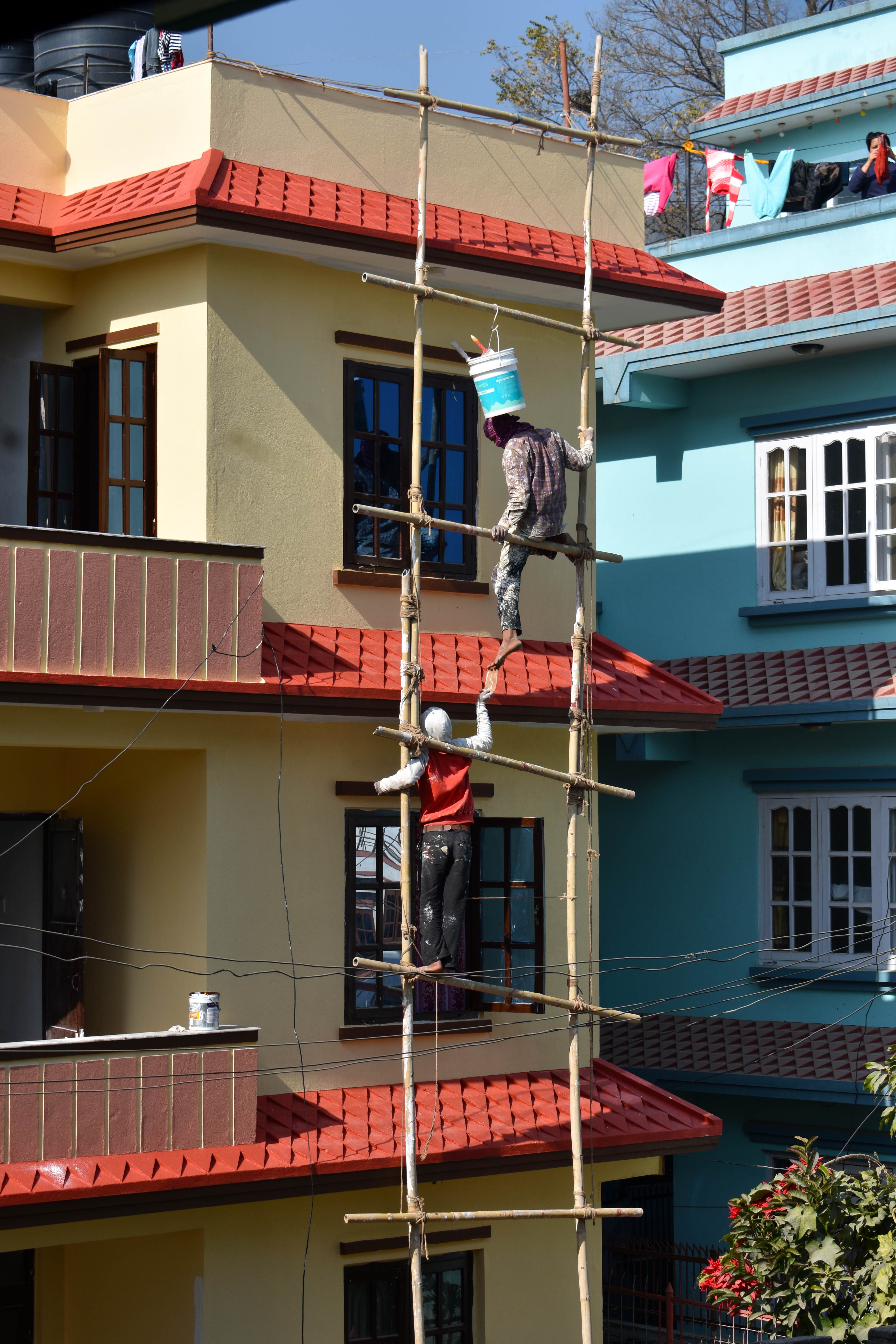Lesson 10
Practicing Proofs
- Let’s practice what we’ve learned about proofs and congruence.
Problem 1
Painters and carpenters use scaffolding to climb buildings from the outside. What shapes do you see? Why does one figure have more right angles?


Problem 2
Select all true statements based on the diagram.

Angle \(CBE\) is congruent to angle \(ABE\).
Angle \(CEB\) is congruent to angle \(DEA\).
Segment \(DA\) is congruent to segment \(CB\).
Segment \(DC\) is congruent to segment \(AB\).
Line \(DC\) is parallel to line \(AB\).
Line \(DA\) is parallel to line \(CB\).
Problem 3
Prove \(ABCD\) is a parallelogram.

Problem 4
Tyler has proven that triangle \(WYZ\) is congruent to triangle \(WYX\) using the Side-Side-Side Triangle Congruence Theorem. Why can he now conclude that diagonal \(WY\) bisects angles \(ZWX\) and \(ZYX\)?

Problem 5
\(WXYZ\) is a kite. Angle \(WXY\) has a measure of 133 degrees and angle \(ZYX\) has a measure of 34 degrees. Find the measure of angle \(ZWY\).

Problem 6
Elena is thinking through a proof using a reflection to show that the base angles of an isosceles triangle are congruent. Complete the missing information for her proof.

Call the midpoint of segment \(CD\) \(\underline{\hspace{.5in}1\hspace{.5in}}\). Construct the perpendicular bisector of segment \(CD\). The perpendicular bisector of \(CD\) must go through \(B\) since it's the midpoint. \(A\) is also on the perpendicular of \(CD\) because the distance from \(A\) to \(\underline{\hspace{.5in}2\hspace{.5in}}\) is the same as the distance from \(A\) to \(\underline{\hspace{.5in}3\hspace{.5in}}\). We want to show triangle \(ADC\) is congruent to triangle \(ACD\). Reflect triangle \(ADC\) across line \(\underline{\hspace{.5in}4\hspace{.5in}}\). Since \(\underline{\hspace{.5in}5\hspace{.5in}}\) is on the line of reflection, it definitely lines up with itself. \(DB\) is congruent to \(\underline{\hspace{.5in}6\hspace{.5in}}\) since \(AB\) is the perpendicular bisector of \(CD\). \(D’\) will coincide with \(\underline{\hspace{.5in}7\hspace{.5in}}\) since it is on the other side of a perpendicular line and the same distance from it (and that’s the definition of reflection!). \(C’\) will coincide with \(\underline{\hspace{.5in}8\hspace{.5in}}\) since it is on the other side of a perpendicular line and the same distance from it (and that’s the definition of reflection!). Since the rigid transformation will take triangle \(ADC\) onto triangle \(ACD\), that means angle \(\underline{\hspace{.5in}9\hspace{.5in}}\) will be taken onto angle \(\underline{\hspace{.5in}10\hspace{.5in}}\) (they are corresponding parts under the same reflection), and therefore they are congruent.
Problem 7
Segment \(EG\) is an angle bisector of angle \(FGH\). Noah wrote a proof to show that triangle \(HEG\) is congruent to triangle \(FEG\). Noah's proof is not correct. Why is Noah's proof incorrect?

- Side \(EG \) is congruent to side \(EG\) because they're the same segment.
- Angle \(EGH\) is congruent to angle \(EGF\) because segment \(EG\) is an angle bisector of angle \(FGH\).
- Angle \(HEG\) is congruent to angle \(FEG\) because segment \(EG\) is an angle bisector of angle \(FGH\).
- By the Angle-Side-Angle Triangle Congruence Theorem, triangle \(HEG\) is congruent to triangle \(FEG\).
Problem 8
Figure \(HNMLKEFG\) is the image of figure \(ABCDKLMN\) after being rotated 90 degrees counterclockwise around point \(K\). Draw an auxiliary line in figure \(ABCDKLMN\) to create a quadrilateral. Draw the image of the auxiliary line when rotated 90 degrees counterclockwise around point \(K\).
Write a congruence statement for the quadrilateral you created in figure \(ABCDKLMN\) and the image of the quadrilateral in figure \(HNMLKEFG\).
